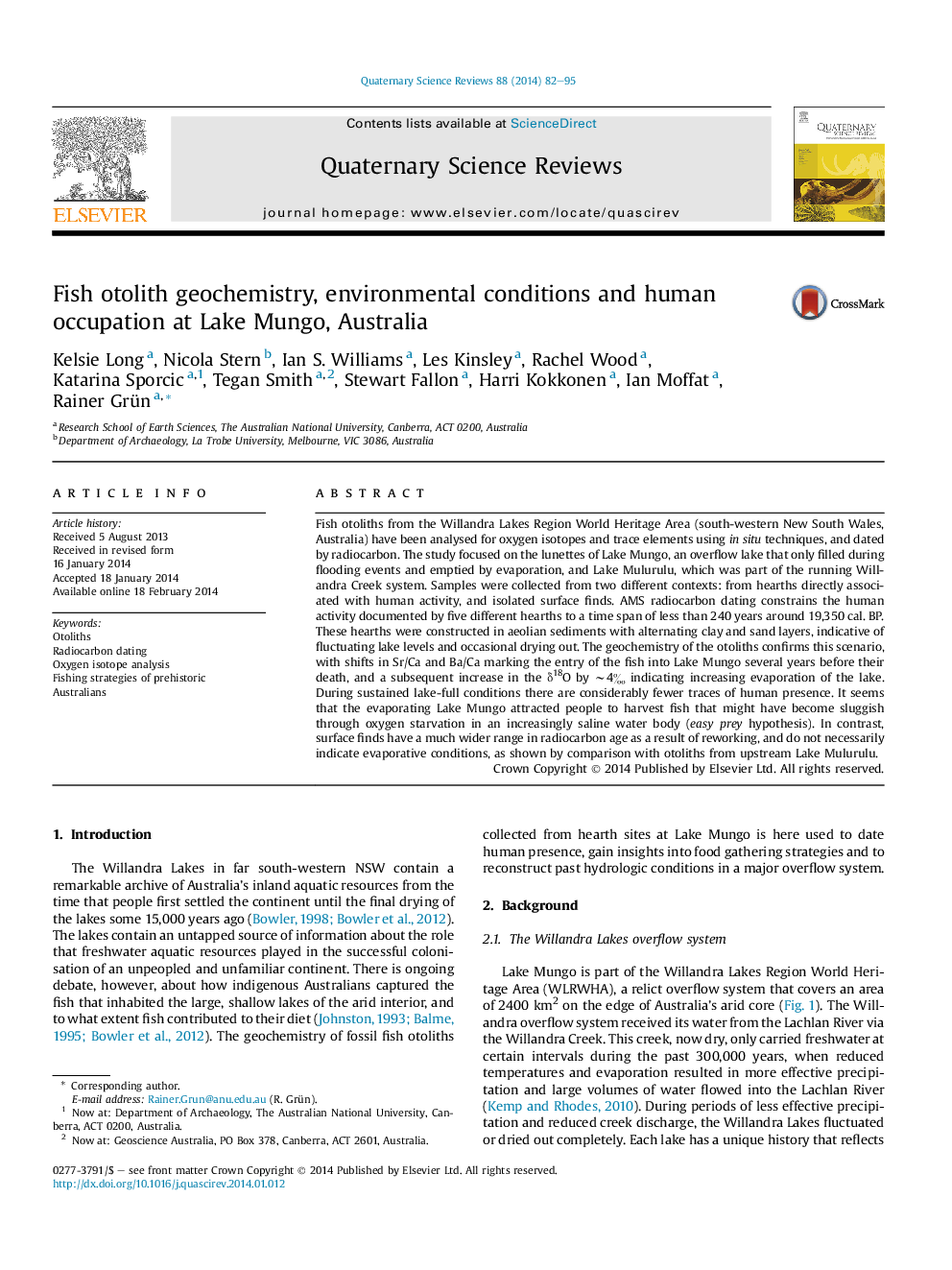| Article ID | Journal | Published Year | Pages | File Type |
|---|---|---|---|---|
| 4736612 | Quaternary Science Reviews | 2014 | 14 Pages |
•C-14 dating of otoliths provided highly precise results for human presence.•Sr/Ca and Ba/Ca provided the timing of fish entering Lake Mungo.•Oxygen isotopes indicated lake evaporation before the fish's death.•The evaporating lake invited people to harvest fish using the easy prey technique.•Traces of human presence strongly increased when lake levels oscillated.
Fish otoliths from the Willandra Lakes Region World Heritage Area (south-western New South Wales, Australia) have been analysed for oxygen isotopes and trace elements using in situ techniques, and dated by radiocarbon. The study focused on the lunettes of Lake Mungo, an overflow lake that only filled during flooding events and emptied by evaporation, and Lake Mulurulu, which was part of the running Willandra Creek system. Samples were collected from two different contexts: from hearths directly associated with human activity, and isolated surface finds. AMS radiocarbon dating constrains the human activity documented by five different hearths to a time span of less than 240 years around 19,350 cal. BP. These hearths were constructed in aeolian sediments with alternating clay and sand layers, indicative of fluctuating lake levels and occasional drying out. The geochemistry of the otoliths confirms this scenario, with shifts in Sr/Ca and Ba/Ca marking the entry of the fish into Lake Mungo several years before their death, and a subsequent increase in the δ18O by ∼4‰ indicating increasing evaporation of the lake. During sustained lake-full conditions there are considerably fewer traces of human presence. It seems that the evaporating Lake Mungo attracted people to harvest fish that might have become sluggish through oxygen starvation in an increasingly saline water body (easy prey hypothesis). In contrast, surface finds have a much wider range in radiocarbon age as a result of reworking, and do not necessarily indicate evaporative conditions, as shown by comparison with otoliths from upstream Lake Mulurulu.
